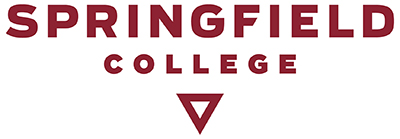Graduate Art Therapy/Counseling Program Outcomes
Goal 1 : Students will describe and integrate knowledge of the history and theories of art therapy as a foundation for professional practice.
- SLO 1 : Describe the historical and theoretical development of art therapy as a profession.
- SLO 2 : Explain the therapeutic benefits of a variety of art processes and media, strategies and interventions, and their applicability to the treatment process for individuals, groups, and families.
- SLO 3 : Demonstrate ways that art therapy, from a multicultural perspective, takes into consideration the specific values, beliefs, and actions influenced by a client’s race, ethnicity, nationality, gender, religion, and socioeconomic status, political views, sexual orientation, geographic region, physical capacity or disability, and historical or current experiences within the dominant culture.
Goal 2 : Students will develop a professional identity as an art therapist/counselor and have a clear understanding of ethical and legal issues inherent in the field.
- SLO 4 : Selects treatment plans that are based on culturally and developmentally appropriate assessment and evaluation methods and administers and interprets results to identify challenges, strengths, resilience, and resources for art therapy treatment planning.
- SLO 5 : Demonstrate culturally appropriate, collaborative, and productive therapeutic relationships with clients.
- SLO 6 : State federal and state laws and professional ethics as they apply to the practice of art therapy and counseling.
- SLO 7 : Demonstrates appropriate responses to ethical and legal dilemmas using ethical decision-making models, supervision feedback, and professional and legal consultation when necessary.
- SLO 8 : Explains professional roles and responsibility to engage in advocacy endeavors as they relate to involvement in professional organizations and advancement.
Goal 3 : Students will comprehend and apply an understanding of the clinical domain of art therapy and counseling in the field.
- SLO 9 : Identifies impacts of oppression, prejudice, discrimination, and privilege on access to mental health care, and develops responsive practices that include collaborations, empowerment, advocacy, and social justice action.
- SLO 10 : Demonstrates the ability to identify principles of human development, artistic and creative development, human sexuality, gender identity development, family life cycle, and psychopathology, to the assessment and treatment of clients.
Goal 4 : Students will understand research methodology, apply critical thinking and demonstrate skills needed to design and conduct a research study in art therapy/counseling.
- SLO 11 : States legal, ethical, and cultural considerations in research proposals and, as applicable, when conducting art therapy research.
- SLO 12 : Pursues professional development through accessing current art therapy literature, research, best practices, and continuing educational activities to inform clinical practice
Goal 5 : Students will demonstrate creative thinking and apply knowledge of art processes and media.
- SLO 11 : Recognize clients’ use of imagery, creativity, symbolism, and metaphor as a valuable means for communicating challenges and strengths and support clients’ use of art-making for promoting growth and well-being.
- SLO 12 : Demonstrate the ability to continuously deepen self -understanding through personal growth experiences, reflective practice, and personal art-making to strengthen a personal connection to the creative process, assist in self-awareness, promote well-being, and guide professional practice.
